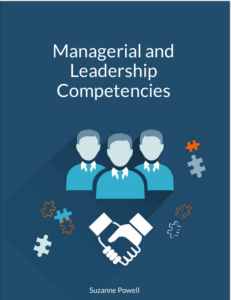Introduction
Leadership is not just a position or a title; it’s a set of skills and qualities that empower individuals to guide, inspire, and drive positive change in both their personal and professional lives.
If you’re aspiring to become a more effective leader at work then developing leadership skills is a crucial step towards achieving your goals and making a meaningful impact.
In today’s fast-paced and ever-evolving world, the demand for capable leaders has never been greater.
Strong leaders are the driving force behind successful organisations as they possess the ability to motivate, communicate, and make critical decisions that can shape the course of events.
This step-by-step guide is designed to provide you with the knowledge, tools, and strategies you need to embark on a journey of leadership development.
Whether you’re just starting on your leadership path or looking to enhance your existing leadership abilities, this guide will offer valuable insights and actionable advice to help you grow as a leader.
Throughout this journey, you’ll explore various aspects of leadership, from self-assessment and goal setting to communication skills, relationship building, and problem-solving.
You’ll learn about different leadership styles, understand the importance of trust and teamwork, and discover how to navigate the challenges that come with leadership responsibilities.
Leadership is not a destination but a continuous process of growth and self-improvement. By the end of this guide, you’ll have a clearer understanding of what it takes to be an effective leader and be well-equipped to apply these principles in your personal and professional life.
So, let’s begin the exciting adventure of developing your leadership skills—one step at a time.
Assessing Your Current Leadership Abilities
Before embarking on the journey of leadership development, it’s essential to have a clear understanding of your current leadership abilities.
This self-assessment process will serve as the foundation for your growth as a leader. In this section, we’ll explore three key steps to help you assess your leadership skills: self-reflection and self-awareness, identifying strengths and weaknesses, and seeking feedback from others.
Self-reflection and Self-awareness
Self-reflection and self-awareness are the cornerstones of effective leadership development. To assess your leadership abilities, take the time to introspect and gain a deep understanding of yourself. Here’s how:
- Set aside dedicated time: Find a quiet and comfortable space where you can reflect without distractions. This could be during your morning routine, a walk, or journaling sessions.
- Ask meaningful questions: Consider questions like: What are my core values? What leadership experiences have shaped me? What are my leadership goals? What leadership challenges have I faced in the past?
- Keep a leadership journal: Maintaining a journal to document your thoughts, experiences, and insights can be incredibly valuable. Regularly review your entries to track your growth over time.
- Seek feedback from your inner circle: Talk to friends, family, and close colleagues who know you well. Ask them about your leadership qualities, what they perceive as your strengths, and areas where you might need improvement.
Identifying Strengths and Weaknesses
Once you’ve engaged in self-reflection and developed a sense of self-awareness, the next step is to identify your leadership strengths and weaknesses.
This process will help you understand where you excel and where you can focus your development efforts.
- List your strengths: Make a list of the leadership qualities and skills that you believe you excel in. These could include communication, empathy, decision-making, or strategic thinking.
- Acknowledge weaknesses: Be honest with yourself about areas where you may need improvement. It’s important to confront your weaknesses with a growth mindset, recognising that they present opportunities for development.
- Use self-assessment tools: Consider using leadership assessment tools or surveys to gain additional insights into your strengths and weaknesses. These tools can provide valuable data to complement your self-assessment.
Seeking Feedback From Others
Feedback from others is a crucial element of leadership assessment. It provides an external perspective on your leadership abilities and can help you identify blind spots or areas for improvement.
- Choose your feedback sources wisely: Seek feedback from colleagues, supervisors, mentors, and peers who can provide constructive and honest assessments of your leadership. Ensure that these individuals are familiar with your leadership style and have observed your actions in relevant situations.
- Ask for specific feedback: When requesting feedback, be clear about what you’d like to know. For example, you might ask, “Can you provide feedback on my communication skills during team meetings?” Specific questions yield more actionable insights.
- Be open and receptive: Embrace both positive and constructive feedback with an open mind. Remember that feedback is a valuable resource for growth, and your ability to accept and act on it is a sign of maturity as a leader.
By engaging in these self-assessment practices, you’ll lay a strong foundation for your leadership development journey.
Understanding your current abilities, both strengths and weaknesses is the first step toward becoming a more effective and impactful leader.
Setting Clear Leadership Goals
Setting clear and meaningful leadership goals is a pivotal step in your journey towards becoming an effective leader. These goals serve as your compass, guiding your actions and decisions.
this section, we’ll delve into the process of setting leadership goals, including defining your leadership vision, establishing short-term and long-term objectives, and aligning your goals with personal and organisational values.
Defining Your Leadership Vision
- Reflect on your purpose: Start by reflecting on why you want to be a leader. What is your overarching vision for your leadership journey? What impact do you aspire to make in your organisation, community, or field? Your leadership vision should be closely linked to your passions and values.
- Write a vision statement: Craft a concise and inspiring vision statement that encapsulates your leadership aspirations. Your vision statement should be clear, compelling, and motivating. It should answer the question, “What kind of leader do I want to become?”
- Visualise success: Envision what success looks like in your leadership role. Imagine the positive changes you want to bring about and the difference you want to make. Visualising success can help you stay focused on your long-term goals.
Short-term and Long-term Leadership Objectives
- Set SMART goals: SMART stands for Specific, Measurable, Achievable, Relevant, and Time-bound. Break down your leadership vision into smaller, actionable objectives that adhere to these criteria. Short-term goals should be achievable within a few months to a year, while long-term goals may span several years.
- Prioritise your objectives: Determine the order in which you will pursue your goals. Which objectives are most critical to achieving your vision? Prioritisation ensures that you allocate your time and resources effectively.
- Create a timeline: Develop a timeline that outlines when you aim to achieve each goal. Having a clear timeframe provides a sense of urgency and accountability.
Aligning Goals With Personal and Organisational Values
- Identify your core values: Reflect on your personal values and principles. What do you believe in, and what ethical standards do you uphold? Your leadership goals should align closely with your core values to ensure authenticity in your leadership style.
- Understand organisational values: Familiarise yourself with the values and mission of your organisation or the context in which you plan to lead. Aligning your goals with organisational values demonstrates your commitment to the greater mission and can garner support from colleagues and superiors.
- Seek input and feedback: Share your leadership goals with trusted colleagues, mentors, or advisors. Their insights can help you refine your goals and ensure they align with your personal and organisational values. Feedback can also provide valuable perspectives that you may not have considered.
Setting leadership goals is an ongoing process that requires periodic review and adjustment.
As you grow and evolve as a leader, your goals may need refinement to stay aligned with your vision and values.
Keep in mind that leadership is not solely about achieving individual success but also about positively impacting those around you and contributing to the greater good.
By setting clear and meaningful leadership goals, you pave the way for a purposeful and impactful leadership journey.
Understanding Leadership Styles
Effective leadership is not one-size-fits-all; it involves adapting your approach to suit different situations and individuals.
Understanding various leadership styles, recognising your natural style, and learning how to adapt are critical aspects of becoming a versatile and impactful leader.
In this section, we will explore these key elements:
Exploring different leadership styles (e.g., autocratic, democratic, transformational)
- Autocratic Leadership: Autocratic leaders make decisions independently and often with little input from team members. This style is effective in situations that require quick decision-making and a clear chain of command. However, it may stifle creativity and teamwork.
- Democratic Leadership: Democratic leaders involve team members in the decision-making process. This style fosters collaboration, creativity, and a sense of ownership among team members. It is especially useful when diverse perspectives are needed.
- Transformational Leadership: Transformational leaders inspire and motivate their teams by setting high standards and encouraging personal growth. They often lead by example and are skilled at building strong relationships. This style is effective in driving innovation and positive change.
- Servant Leadership: Servant leaders prioritise the needs and development of their team members above their own. They focus on serving others and creating a supportive environment. This style can foster trust and loyalty within teams.
- Laissez-Faire Leadership: Laissez-faire leaders provide autonomy to their team members and allow them to make decisions independently. This style is effective with experienced and self-motivated teams but may lead to confusion or lack of direction in less mature groups.
Recognising Your Natural Leadership Style
- Self-assessment: Reflect on your past leadership experiences and observe your default leadership approach. Are you more inclined towards making decisions independently, involving others, or inspiring transformation? Understanding your natural style is the first step in becoming a more self-aware leader.
- Feedback from others: Seek input from colleagues, mentors, or team members about your leadership style. They may offer valuable insights into how you are perceived as a leader and whether your style aligns with your intentions.
- Personality assessments: Consider taking personality assessments like the Myers-Briggs Type Indicator (MBTI) or the Big Five personality traits test to gain a deeper understanding of your inherent leadership tendencies.
Adapting Your Style to Different Situations
- Situation assessment: Analyse the specific situation you are facing as a leader. Consider factors such as the urgency of the task, the skills and motivation of your team members, and the organisational culture.
- Flexibility: Recognise that no single leadership style is universally effective. Be willing to adapt your approach based on the unique demands of each situation. Sometimes, a directive approach is needed, while in other instances, a more collaborative style may be suitable.
- Effective communication: Regardless of your leadership style, effective communication is key. Clearly communicate your expectations, goals, and the rationale behind your chosen leadership approach to your team members.
- Continuous learning: Invest in your leadership development by studying various leadership styles and strategies. Attend leadership workshops, read books, and seek mentorship to expand your repertoire of leadership skills.
Understanding and effectively applying different leadership styles is a hallmark of a versatile and adaptable leader. By recognizing your natural style and knowing when and how to adjust it, you can build stronger relationships with your team members, navigate diverse challenges, and achieve better outcomes in your leadership roles.
Communication Skills for Effective Leadership
Effective communication is the cornerstone of successful leadership.
Leaders who excel in communication can inspire, motivate, and guide their teams toward shared goals.
In this section, we will explore the vital components of communication skills for effective leadership, including:
The Importance of Effective Communication
- Clarity and Direction: Effective communication provides clear direction and sets expectations for team members. When a leader communicates goals, objectives, and strategies clearly, it helps team members understand their roles and responsibilities.
- Building Trust: Transparent and open communication fosters trust within the team. When team members feel that their leader is honest and forthcoming, they are more likely to trust the leader’s decisions and guidance.
- Motivation: Inspirational communication can motivate and energize a team. Leaders who can articulate a compelling vision and inspire others to work toward it create a sense of purpose that drives performance.
Listening Skills
- Active Listening: Active listening involves fully focusing on and understanding what the other person is saying without interruption. It includes nodding, paraphrasing, and asking clarifying questions to demonstrate your engagement and comprehension.
- Empathetic Listening: Empathetic listening goes beyond comprehension; it involves understanding and acknowledging the speaker’s feelings and perspectives. Leaders who practice empathetic listening build stronger relationships and trust with their teams.
- Feedback: Encourage open and honest feedback from team members. Act on their feedback to demonstrate that you value their input. Listening to feedback can lead to valuable insights and improvements.
Non-verbal Communication
- Body Language: Pay attention to your body language, as it can convey messages as effectively as words. Maintain good posture, make eye contact, and use gestures that align with your verbal message to appear confident and engaged.
- Facial Expressions: Your facial expressions can convey emotions and attitudes. Be mindful of your expressions to ensure they align with the message you intend to convey.
- Tone of Voice: The tone of your voice can significantly impact how your message is received. Practice using a calm, confident, and respectful tone to convey your messages effectively.
Conflict Resolution and Negotiation Techniques
- Conflict Resolution: Leaders often encounter conflicts within teams. Effective conflict resolution involves addressing issues promptly, remaining neutral, and facilitating open dialogue. Seek win-win solutions that satisfy all parties involved.
- Negotiation Skills: Negotiation is a valuable leadership skill, particularly when dealing with stakeholders or team members with differing interests. Practice negotiation techniques, such as compromising, collaborating, or finding creative solutions to reach mutually beneficial agreements.
- Mediation: In cases where conflicts escalate, consider mediation to bring in a neutral third party to help facilitate resolution. Mediation can help maintain working relationships and find common ground.
In summary, effective communication is a fundamental skill for leaders to master. It enhances clarity, builds trust, motivates teams, and aids in conflict resolution.
By honing listening skills, understanding non-verbal cues, and developing conflict resolution and negotiation techniques, leaders can create a more positive and productive work environment while achieving their organisational goals.
Building Strong Relationships and Trust
Trust is the bedrock of effective leadership. Without trust, it is challenging to influence, motivate, and collaborate with others.
In this section, we will delve into the critical aspects of building and maintaining trust in leadership, including:
The Role of Trust in Leadership
- Foundation of Leadership: Trust serves as the foundation upon which leadership is built. Leaders must earn the trust of their team members, colleagues, and superiors to be effective in their roles.
- Enhanced Productivity: When trust is present, team members are more likely to be engaged and committed, leading to increased productivity. Trust creates a positive work environment where individuals feel safe to express ideas and take calculated risks.
- Conflict Resolution: Trust facilitates effective conflict resolution. In a trusting environment, team members are more willing to address conflicts openly and work together to find solutions.
Strategies for Building and Maintaining Trust
- Consistency and Reliability: Be consistent in your words and actions. Demonstrating reliability by following through on commitments and promises is key to building trust.
- Transparency: Share information openly and honestly. Being transparent about your intentions, decisions, and challenges fosters trust among your team members and colleagues.
- Accountability: Hold yourself accountable for your actions and decisions. When leaders take responsibility for their mistakes and learn from them, it strengthens trust.
- Competence: Build trust by continuously developing your skills and expertise. Competence reassures others that you are capable of leading effectively.
- Empathy: Show empathy and understanding toward others’ perspectives and feelings. Leaders who genuinely care about their team members build trust more easily.
- Consistent Communication: Maintain open and consistent communication with your team. Regular check-ins, team meetings, and one-on-one conversations help keep everyone informed and engaged.
Building Relationships With Team Members, Colleagues, and Superiors
- Team Members: Get to know your team members on a personal level. Understand their strengths, weaknesses, and career aspirations.
Provide support and mentorship to help your team members grow and develop in their roles.
Actively listen to their concerns and ideas, and incorporate their input into decision-making when appropriate.
- Colleagues: Collaborate and seek opportunities to work with colleagues from different departments or teams.
Build a reputation for being a reliable and cooperative partner in cross-functional projects.
Offer assistance and share your expertise to strengthen professional relationships.
- Superiors: Communicate openly with your superiors and keep them informed about your team’s progress and challenges.
Seek feedback and guidance from your superiors to demonstrate your commitment to personal and professional growth.
Align your goals and actions with the goals and priorities of your organisation to gain the trust and support of senior leadership.
In conclusion, trust is the currency of effective leadership. By consistently demonstrating trustworthiness, transparency, and empathy, and by investing time in building meaningful relationships with team members, colleagues, and superiors, you can create an environment where trust thrives.
Strong relationships and trust form the basis for a cohesive and high-performing team, enabling you to achieve your leadership objectives more effectively.
Decision-Making and Problem-Solving
Effective decision-making and problem-solving are indispensable skills for successful leaders. Leaders are often faced with complex and pivotal choices that can significantly impact their teams and organisations.
In this section, we will explore the key components of decision-making and problem-solving, including:
The Decision-making Process
- Identify the Decision: The first step in the decision-making process is to clearly identify the decision that needs to be made. Define the problem or situation that requires a decision.
- Gather Information: Collect relevant data and information related to the decision. This may involve research, consultations, and data analysis to ensure that you have a comprehensive understanding of the issue.
- Generate Alternatives: Brainstorm and create a list of possible solutions or alternatives. Encourage creative thinking and consider various approaches to address the problem.
- Evaluate Alternatives: Assess each alternative based on factors such as feasibility, potential outcomes, risks, and alignment with organisational goals and values.
- Make a Decision: Choose the best alternative based on your evaluation. Consider involving key stakeholders in the decision-making process when appropriate.
- Implement the Decision: Once a decision is made, create a plan for implementation. Assign responsibilities, set deadlines, and ensure that the decision is executed effectively.
- Monitor and Evaluate: Continuously monitor the outcomes of the decision. Assess its impact on the organisation and make adjustments as needed to achieve desired results.
Analysing Situations and Gathering Information
- Situation Analysis: Before making decisions, thoroughly analyse the situation or problem at hand. Understand the context, underlying causes, and potential consequences of different courses of action.
- Data Collection: Gather data and information from reliable sources. Utilise both quantitative and qualitative data to gain a comprehensive understanding of the issue.
- Stakeholder Input: Seek input and perspectives from relevant stakeholders, including team members, colleagues, and subject matter experts. Diverse viewpoints can provide valuable insights.
- SWOT Analysis: Conduct a SWOT analysis (Strengths, Weaknesses, Opportunities, Threats) to assess the internal and external factors that may impact your decision.
Related Reading: SWOT Analysis: The First Exciting Step in Business Strategy
Making Informed and Ethical Decisions
- Ethical Considerations: Consider the ethical implications of your decisions. Ensure that your choices align with ethical principles, organizational values, and legal standards.
- Long-term Impact: Evaluate how the decision will affect the organisation, its stakeholders, and the broader community in the long term. Avoid decisions that provide short-term gains at the expense of long-term sustainability.
- Risk Assessment: Assess the potential risks associated with each decision. Develop risk mitigation strategies to minimise negative consequences.
- Decision-Making Frameworks: Consider using decision-making frameworks such as cost-benefit analysis, ethical decision-making models, or risk analysis tools to structure your decision-making process.
- Consultation: When facing complex or ethically challenging decisions, seek guidance from mentors, colleagues, or ethics committees. Their input can help you navigate difficult choices.
Leaders who excel in decision-making and problem-solving are not only capable of making sound choices but also of guiding their teams through challenging situations.
By following a systematic decision-making process, analysing situations thoroughly, and making informed and ethical decisions, you can strengthen your leadership and contribute to the success of your organisation.
Time Management and Prioritisation
Effective time management and prioritisation are crucial for leaders who must balance numerous responsibilities and tasks.
Leaders who can manage their time wisely are better equipped to make informed decisions, foster productivity, and achieve organisational goals.
In this section, we will explore key strategies for time management and prioritization, including:
Time Management Principles for Leaders
- Goal Alignment: Align your daily activities with your long-term goals and vision as a leader. Ensure that your tasks contribute to the overarching objectives of your team or organisation.
- Prioritisation: Identify and prioritise tasks based on their importance and urgency. Use techniques like the Eisenhower Matrix (quadrant-based task sorting) to categorise tasks into “urgent and important,” “important but not urgent,” “urgent but not important,” and “neither urgent nor important.”
- Planning and Scheduling: Create a daily or weekly schedule that outlines your tasks and commitments. Planning ahead helps you allocate time to critical tasks and prevents last-minute crises.
- Time Blocking: Consider time blocking, where you allocate specific blocks of time to focus on specific tasks or types of work. This technique minimises distractions and enhances productivity.
- Elimination of Time Wasters: Identify and eliminate time-wasting activities or habits that do not contribute to your goals. This might include excessive meetings, unnecessary emails, or multitasking.
Setting Priorities and Managing Workload
- Identify High-Impact Tasks: Determine which tasks have the most significant impact on your team’s or organisation’s success. Prioritise these tasks to ensure they receive your attention and energy.
- Urgent vs. Important: Distinguish between tasks that are urgent (require immediate attention) and tasks that are important (align with long-term goals). Give precedence to important tasks, even if they are not urgent.
- Deadlines: Be mindful of deadlines and plan your work accordingly. Avoid the stress and inefficiency of last-minute rushes by working steadily toward deadlines.
- Time Estimation: Develop the ability to estimate how much time different tasks will take. This skill helps you allocate time effectively and avoid overcommitting.
- Delegate Appropriately: Recognise when a task can be delegated to others on your team. Delegation not only helps distribute the workload but also provides growth opportunities for team members.
Delegating Tasks Effectively
- Task Assessment: Assess tasks based on their complexity, importance, and the skills required. Delegate tasks that align with team members’ strengths and developmental goals.
- Clear Communication: When delegating, provide clear instructions, expectations, and deadlines. Ensure that team members understand the task’s significance and their role in its completion.
- Monitoring Progress: While delegating tasks, maintain open lines of communication to track progress and offer support as needed. Be available for questions or guidance but avoid micromanaging.
- Empowerment and Trust: Trust your team members to carry out their assigned tasks. Empower them to make decisions within their scope of responsibility. Trust and autonomy promote motivation and growth.
- Feedback and Recognition: Provide constructive feedback and recognition for tasks completed successfully. Acknowledging team members’ contributions reinforces their sense of value and motivation.
Effective time management and prioritisation are essential leadership skills that can boost your productivity, reduce stress, and ensure that you focus on the most impactful activities.
By adhering to time management principles, setting clear priorities, and delegating tasks effectively, you can optimise your leadership capabilities and contribute to the success of your team and organisation.
Leading and Motivating Teams
As a leader, your ability to understand and influence team dynamics, motivate team members, and address conflicts and challenges is critical to achieving collective success.
In this section, we will explore key aspects of leading and motivating teams, including:
Team Dynamics and Team Development Stages
- Forming: In the initial forming stage, team members are getting acquainted, and roles and responsibilities are not yet clear. As a leader, you play a vital role in providing structure, setting expectations, and facilitating introductions.
- Storming: During the storming stage, conflicts and differences of opinion may arise as team members establish their positions and challenge one another. As a leader, your role is to mediate conflicts, encourage open communication, and help the team find common ground.
- Norming: In the norming stage, team members begin to develop trust, cohesion, and a sense of shared purpose. Your role is to support the team’s progress by reinforcing positive behaviours and providing guidance when needed.
- Performing: The performing stage is characterised by high productivity, effective collaboration, and a focus on achieving goals. As a leader, your role shifts to providing support and resources while allowing the team greater autonomy.
- Adjourning (or Mourning): In the adjourning stage, the team disbands as the project or work is completed. Acknowledge and celebrate the team’s achievements and provide closure for team members.
Motivational Techniques and Strategies
- Clear Vision and Goals: Communicate a compelling vision and set clear, achievable goals for the team. When team members understand the bigger picture and their role in it, they are more motivated.
- Recognition and Appreciation: Acknowledge and appreciate the efforts and contributions of team members. Public recognition, praise, and rewards can boost motivation.
Related Reading: Why Reward and Recognition is More Important Than You Think
- Autonomy and Empowerment: Empower team members by giving them autonomy and decision-making authority within their areas of responsibility. Trusting your team fosters a sense of ownership and motivation.
- Feedback and Development: Provide constructive feedback and opportunities for growth. Encourage continuous learning and skill development to keep team members engaged.
- Inclusivity: Ensure that every team member’s voice is heard and valued. Create an inclusive environment where diverse perspectives are welcomed and respected.
Handling Team Conflicts and Challenges
- Open Communication: Promote open and honest communication within the team. Encourage team members to voice their concerns and provide a platform for constructive discussions.
- Conflict Resolution: When conflicts arise, address them promptly and constructively. Use conflict resolution techniques such as active listening, negotiation, and compromise to find mutually acceptable solutions.
- Mediation: If conflicts escalate and cannot be resolved within the team, consider bringing in a neutral mediator to facilitate discussions and find common ground.
- Team Building Activities: Organise team-building activities and exercises to strengthen team cohesion and trust. These activities can help alleviate conflicts and improve working relationships.
- Role Clarification: Ensure that team members have a clear understanding of their roles and responsibilities. Misunderstandings about roles can lead to conflicts and confusion.
Leading and motivating teams is a dynamic process that requires adaptability and a deep understanding of group dynamics. By navigating the various stages of team development, employing motivational techniques, and effectively addressing conflicts and challenges, you can foster a motivated and high-performing team that excels in achieving its objectives.
Continuous Learning and Improvement
Leadership is not a static role; it’s an ongoing journey of growth and development.
Effective leaders recognise the importance of continuous learning and improvement to stay relevant and excel in their roles.
In this section, we will explore key elements of continuous leadership development, including:
The Importance of Ongoing Leadership Development
- Adaptation to Change: The business landscape is constantly evolving, and leaders must adapt to new challenges, technologies, and trends. Continuous learning ensures that leaders remain agile and effective in changing environments.
- Personal Growth: Leadership development is not just about professional success but also personal growth. It fosters self-awareness, resilience, and a growth mindset, which are crucial for leadership effectiveness.
- Inspiration for Others: Leaders who commit to continuous development set an example for their teams. When team members see their leaders actively seeking growth, they are more likely to follow suit.
Seeking Mentorship and Guidance
- Mentorship: Seek out mentors or coaches who can provide guidance, support, and valuable insights based on their own leadership experiences. Mentorship can accelerate your development and offer a different perspective on leadership challenges.
- Peer Learning: Collaborate with peers and colleagues to learn from their experiences. Peer learning networks can be valuable sources of advice, feedback, and best practices.
- Reverse Mentorship: Consider reverse mentorship, where you learn from younger or less experienced individuals. They may offer fresh perspectives on technology, innovation, and emerging trends.
Staying Updated With Leadership Trends and Best Practices
- Reading and Research: Stay informed by reading books, articles, and research papers on leadership topics. Subscribe to reputable publications and journals that cover leadership trends and best practices.
- Leadership Seminars and Workshops: Attend leadership seminars, workshops, and conferences to gain new insights, network with other leaders, and learn from expert speakers.
- Online Courses and Webinars: Take advantage of online courses and webinars that focus on leadership development. Many universities and organisations offer accessible and high-quality programs.
- Professional Associations: Join professional associations related to your industry or field. These organisations often provide resources, events, and networking opportunities for leadership development.
- Executive Education: Consider enrolling in executive education programs offered by universities and business schools. These programs provide in-depth knowledge and skill development tailored to leaders.
Continuous learning and improvement are integral to effective leadership.
By embracing ongoing development, seeking mentorship and guidance, and staying updated with leadership trends and best practices, you can not only enhance your leadership skills but also inspire and lead your team to success in an ever-changing world.
Overcoming Leadership Challenges
Leadership is not without its challenges and obstacles. Effective leaders are those who can navigate these difficulties with resilience, adaptability, and a problem-solving mindset.
In this section, we will address common leadership challenges and provide strategies for overcoming adversity, setbacks, and developing resilience as a leader.
Common Leadership Challenges and Obstacles
- Uncertainty and Change: Leaders often face uncertainty in rapidly changing environments. This uncertainty can lead to indecision and anxiety.
- Resistance to Change: Implementing change within a team or organisation can encounter resistance from team members or stakeholders.
- Conflict and Disagreement: Conflicts may arise within teams or with colleagues, posing a challenge to maintaining harmony and productivity.
- Work-Life Balance: Balancing leadership responsibilities with personal life can be challenging, leading to burnout or strained relationships.
- Decision-Making Pressure: Leaders must make critical decisions that impact their team or organisation, which can be stressful.
Strategies for Adversity and Setbacks
- Resilience and Mindfulness: Develop resilience by practising mindfulness and stress management techniques. These practices can help you stay grounded during difficult times.
- Problem-Solving Skills: Hone your problem-solving skills to address challenges systematically. Break down complex issues into smaller, manageable parts, and seek input from others when necessary.
- Adaptive Leadership: Embrace adaptive leadership by remaining open to new ideas and approaches. Be willing to pivot when circumstances change.
- Continuous Learning: Approach challenges as opportunities for learning and growth. Reflect on past experiences to identify lessons and apply them to future situations.
- Seek Support: Don’t hesitate to seek support from mentors, colleagues, or a trusted support network. Sharing your challenges can lead to fresh perspectives and solutions.
Developing Resilience as a Leader
- Self-Care: Prioritise self-care to maintain physical and mental well-being. Adequate sleep, exercise, and a balanced diet contribute to resilience.
- Positive Self-Talk: Cultivate a positive mindset by practising self-compassion and positive self-talk. Challenge negative thoughts and focus on your strengths.
- Emotional Intelligence: Develop emotional intelligence to understand and manage your own emotions as well as those of others. This skill enhances your ability to handle challenging situations.
- Adaptability: Embrace change and adaptability as essential components of resilience. Recognise that setbacks are part of the leadership journey and growth opportunities.
- Seek Feedback: Solicit feedback from team members and peers to gain insight into your leadership style and areas for improvement. Constructive feedback can be valuable for building resilience.
Overcoming leadership challenges is an integral part of leadership growth.
By developing resilience, adopting problem-solving strategies, and seeking support when needed, you can navigate obstacles effectively and emerge as a stronger and more capable leader.
Remember that challenges are opportunities for growth and learning on your leadership journey.
Conclusion
In your quest to become an effective leader, you’ve embarked on a transformative journey filled with valuable insights, strategies, and tools.
Let’s summarise the key takeaways from this guide and encourage you to embrace leadership development as an ongoing, rewarding endeavour.
Time to Embark on the Leadership Development Journey
Leadership is not a destination but a continuous journey of growth and refinement.
Every challenge you face, every skill you develop, and every lesson you learn propels you forward as a more capable and impactful leader.
Embrace this journey with enthusiasm and dedication, for it is a path filled with both personal and professional rewards.
Start Applying What You’ve Learned
As you conclude your exploration of leadership development, remember that knowledge alone is not enough; action is the catalyst for growth.
It’s time to put your newfound insights and strategies into practice.
- Set Clear Goals: Take a moment to define your leadership vision and establish clear, actionable goals that align with your values.
- Communication Enhancement: Begin by actively applying effective communication techniques in your interactions with team members and colleagues.
- Strengthen Relationships: Invest in building strong relationships and trust within your team and organisation. Start by listening actively, providing support, and fostering a culture of inclusivity.
- Decision-Making Practice: Apply the decision-making process to a real-life leadership scenario. Consider the information you need, gather data, evaluate alternatives, and make an informed decision.
- Time Management Implementation: Use time management principles to create a schedule that prioritises important tasks and manages your workload more efficiently.
- Team Leadership: Take steps to motivate and lead your team effectively by recognising their achievements, providing feedback, and addressing any challenges or conflicts.
- Continuous Learning: Commit to ongoing leadership development by seeking out mentorship, enrolling in courses, and staying updated with industry trends and best practices.
- Resilience Building: Embrace resilience by focusing on self-care, developing a positive mindset, and seeking opportunities to learn from adversity.
The leadership journey you’re embarking on is a transformative one, and its impact extends far beyond your immediate sphere of influence.
As you apply these principles and strategies, you not only enhance your own leadership abilities but also inspire and empower those around you.
So, take that first step today, and embark on a path of continuous growth, positive impact, and leadership excellence. Your journey starts now, and the possibilities are limitless.
Leadership and Team Management Quiz

Want to build a Leadership and Team Management capability, either for yourself or for your organisation? Then take this insightful quiz to help determine the steps you need to take.
Thanks for reading. If you enjoyed this article why not sign up for the newsletter and get all hints and tips direct to your inbox? You can unsubscribe at any time 😁





